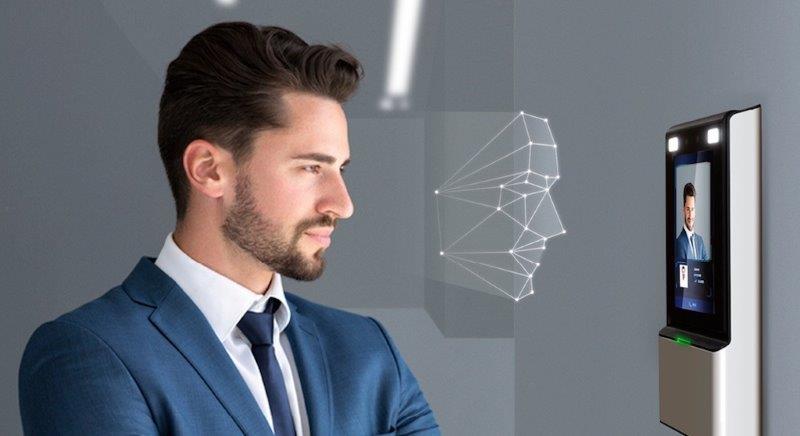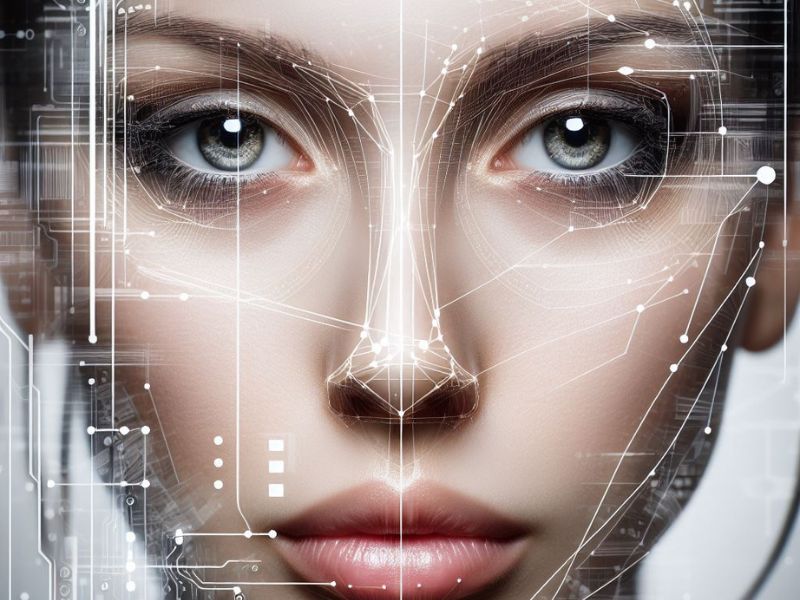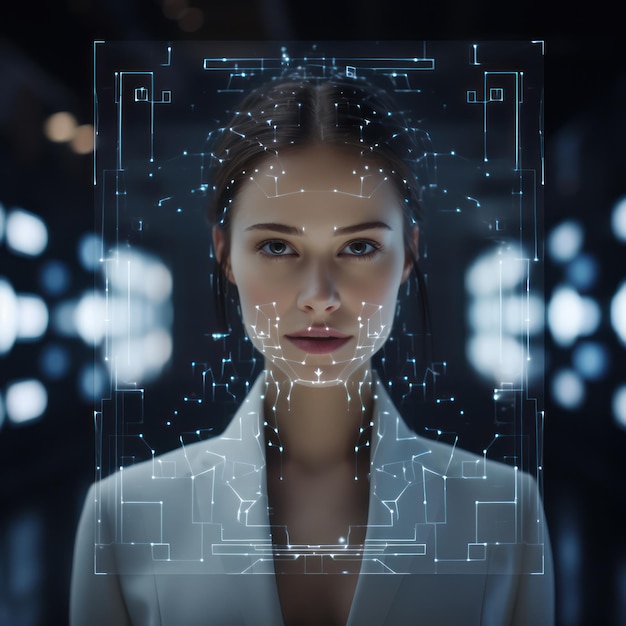ARTICLES
- HOME
- -
- ARTICLES
Exploring the Pros and Cons of Facial Recognition Technology in Security Systems

Facial recognition technology has been a topic of intense debate in recent years, particularly in the realm of security systems. This biometric technology has the potential to revolutionize access control, surveillance, and overall security measures. However, its implementation raises significant concerns regarding privacy and ethical considerations. In this article, we will delve into the intricacies of facial recognition technology, exploring its benefits and drawbacks, while showcasing its effectiveness in access control and surveillance.
As technology continues to evolve, the integration of facial recognition systems into security measures has become increasingly prevalent. These systems work by capturing and analyzing facial features, such as the distance between the eyes, the shape of the nose, and the contours of the jawline, to create a unique biometric template. This template is then compared against a database of known individuals, enabling the system to identify or verify an individual's identity.
While the potential benefits of facial recognition technology are undeniable, there are also significant concerns surrounding privacy and ethical considerations. It is crucial to strike a balance between security and individual rights, ensuring that the implementation of these systems is conducted in a responsible and transparent manner.
The benefits of facial recognition technology in access control:
One of the primary advantages of facial recognition technology lies in its ability to enhance access control measures. Traditional methods of access control, such as key cards or PIN codes, are susceptible to theft, loss, or unauthorized sharing. Facial recognition systems, on the other hand, offer a more secure and convenient solution.
-
Increased Security: By linking an individual's biometric data to their access privileges, facial recognition systems can effectively prevent unauthorized access to sensitive areas or facilities. This heightened level of security can be particularly beneficial in high-risk environments, such as government buildings, airports, or military installations.
-
Improved Efficiency: Facial recognition systems can streamline the access control process, eliminating the need for manual checks or the presentation of physical credentials. This can significantly reduce wait times and improve overall efficiency, particularly in high-traffic areas.
-
Contactless Operation: In the wake of the COVID-19 pandemic, the need for contactless solutions has become increasingly important. Facial recognition systems offer a touchless alternative to traditional access control methods, reducing the potential for disease transmission and promoting a safer environment.
The concerns surrounding facial recognition technology in privacy:
While the benefits of facial recognition technology are undeniable, there are legitimate concerns regarding privacy and the potential for misuse. Critics argue that the widespread implementation of these systems could lead to a erosion of individual privacy and a potential for mass surveillance.
-
Privacy Infringement: The collection and storage of biometric data raise significant privacy concerns. There is a risk that this sensitive information could be compromised, leading to identity theft or other malicious activities.
-
Potential for Bias and Discrimination: Facial recognition algorithms have been known to exhibit biases, particularly against certain ethnic groups or genders. This could lead to discriminatory practices and further exacerbate existing societal inequalities.
-
Chilling Effect on Freedom of Expression: The pervasive use of facial recognition technology in public spaces could have a chilling effect on individuals' freedom of expression and assembly, as people may feel discouraged from participating in lawful protests or gatherings due to the fear of being identified and tracked.
Ethical considerations of using facial recognition technology:
Beyond privacy concerns, the use of facial recognition technology also raises ethical considerations that must be carefully addressed. As this technology becomes more prevalent, it is crucial to establish clear guidelines and regulations to ensure its responsible and ethical implementation.
-
Consent and Transparency: Individuals should be informed about the use of facial recognition technology and have the opportunity to provide consent or opt-out. Transparency regarding data collection, storage, and usage policies is essential to build trust and maintain public confidence.
-
Accountability and Oversight: There must be robust mechanisms in place to ensure accountability and oversight in the deployment of facial recognition systems. Independent audits, regular reviews, and effective redress mechanisms are necessary to prevent misuse and protect individual rights.
-
Balancing Security and Privacy: Striking the right balance between security and privacy is a delicate task. While facial recognition technology can enhance security measures, it should not come at the expense of fundamental human rights and civil liberties. Policymakers and stakeholders must engage in thoughtful deliberation to find a reasonable and ethical equilibrium.
The effectiveness of facial recognition technology in surveillance:
Despite the concerns surrounding privacy and ethical considerations, facial recognition technology has demonstrated its effectiveness in various surveillance applications, particularly in law enforcement and public safety scenarios.
-
Identifying Suspects and Missing Persons: Facial recognition systems can assist law enforcement agencies in identifying suspects or locating missing persons by comparing captured images against databases of known individuals.
-
Enhancing Public Safety: The deployment of facial recognition technology in public spaces, such as airports, train stations, or crowded events, can aid in the detection of potential threats and the prevention of criminal activities.
-
Real-time Monitoring and Alerts: Advanced facial recognition systems can provide real-time monitoring and alerts, enabling rapid response to potential security breaches or suspicious activities.
However, it is important to note that the effectiveness of these systems is heavily dependent on the quality of the input data, the accuracy of the algorithms, and the proper implementation and maintenance of the technology.
Case studies showcasing successful implementation of facial recognition technology:
To better understand the practical applications and potential benefits of facial recognition technology, let's examine a few case studies where it has been successfully implemented:
-
Airports and Border Control: Several airports and border control agencies have implemented facial recognition systems to enhance security and streamline passenger processing. For example, the U.S. Customs and Border Protection agency has deployed a biometric entry-exit system that uses facial recognition to verify the identities of travelers.
-
Law Enforcement and Criminal Investigations: Facial recognition technology has been instrumental in assisting law enforcement agencies in solving crimes and identifying suspects. In one notable case, the technology was used to identify and apprehend the perpetrator of the 2018 Austin bombing attacks.
-
Retail and Customer Experience: Facial recognition systems are also being explored in the retail sector to enhance customer experiences and prevent theft. Some stores are using the technology to recognize loyal customers and provide personalized services, while others are leveraging it to detect and deter shoplifting incidents.
These case studies highlight the potential benefits of facial recognition technology when implemented responsibly and with appropriate safeguards in place.
Addressing the limitations and challenges of facial recognition technology:
While facial recognition technology has demonstrated its effectiveness in various applications, it is not without limitations and challenges. Addressing these issues is crucial to ensure the responsible and ethical deployment of these systems.
-
Accuracy and Bias: As mentioned earlier, facial recognition algorithms can exhibit biases and inaccuracies, particularly when dealing with diverse populations or varying environmental conditions. Ongoing efforts are needed to improve the accuracy and fairness of these algorithms through rigorous testing, auditing, and the incorporation of diverse training data.
-
Data Quality and Management: The effectiveness of facial recognition systems heavily relies on the quality and comprehensiveness of the underlying data. Ensuring the integrity, security, and proper management of biometric data is essential to prevent misuse and maintain public trust.
-
Legal and Regulatory Frameworks: The rapid pace of technological advancement has often outpaced the development of legal and regulatory frameworks governing the use of facial recognition technology. Clear and consistent guidelines are needed to ensure proper oversight, accountability, and the protection of individual rights.
Future developments and advancements in facial recognition technology:
As technology continues to evolve, we can expect to see further advancements and developments in facial recognition technology. These advancements may address some of the current limitations and challenges, while also introducing new capabilities and applications.
-
Improved Accuracy and Reduced Bias: Ongoing research and development efforts are focused on improving the accuracy and reducing the biases of facial recognition algorithms. This includes the use of more diverse training data, advanced machine learning techniques, and the incorporation of additional contextual information.
-
Integration with Other Technologies: Facial recognition technology is expected to be integrated with other emerging technologies, such as artificial intelligence, Internet of Things (IoT) devices, and cloud computing. This integration could lead to more sophisticated and widespread applications, ranging from smart home security systems to intelligent transportation solutions.
-
Privacy-Enhancing Technologies: In response to privacy concerns, there is a growing interest in the development of privacy-enhancing technologies that can be integrated with facial recognition systems. These technologies aim to provide robust privacy protections while still enabling the benefits of facial recognition in legitimate use cases.
Balancing privacy and security: finding the right approach
As we navigate the complexities of facial recognition technology, it is crucial to strike a balance between privacy and security considerations. This delicate equilibrium requires a collaborative effort among policymakers, technology companies, civil society organizations, and the general public.
-
Robust Legal and Regulatory Frameworks: Clear and comprehensive legal and regulatory frameworks are essential to govern the use of facial recognition technology. These frameworks should address issues such as data protection, consent, transparency, and accountability, while providing guidance on acceptable use cases and safeguards.
-
Public Engagement and Transparency: Engaging the public in open and transparent discussions about the deployment of facial recognition technology is vital. This can help build trust, address concerns, and ensure that the implementation of these systems aligns with societal values and expectations.
-
Privacy-by-Design Approach: Adopting a privacy-by-design approach can help mitigate privacy risks from the outset. This involves incorporating privacy considerations into the design and development of facial recognition systems, rather than treating privacy as an afterthought.
By finding the right balance between privacy and security, we can harness the potential benefits of facial recognition technology while ensuring the protection of fundamental human rights and civil liberties.
If you're interested in exploring how facial recognition technology can enhance your security measures while addressing privacy and ethical concerns, we invite you to schedule a consultation with our experts. Our team will work closely with you to understand your specific needs and provide tailored solutions that strike the right balance between security and individual rights. Don't hesitate to contact us today to learn more about our responsible and transparent approach to implementing facial recognition technology.
ABOUT DEEP SECURITY
WHO ARE WE?
Deep Security is a well-established Security Services and Solution Provider with Technology Solution such as Security Manpower / Remote Guarding services, Virtual security solutions. We are licensed by the Police Licensing & Regulatory Department of the Singapore Police Force since 2009, We are also a Reseller and Distributor of Technology Solutions.
We provide tailor-made security solutions for our clients, including remote security services that leverage intrusion detection, motion sensing, video auditing and other advanced technologies. We are organized with a standard process in place to understand and service current market demands. Our team of security experts comprises professionals with experience from the Singapore Police Force and other uniformed groups.
Our state-of-the-art Security Operations Centre allows us to provide 24/7 remote security monitoring, alarm monitoring virtual Escort, and even Voice Down announcements through audio speakers to deter crime. With our Virtual Guard solution, you get the crime prevention benefits of an on-site security guard at a fraction of the cost, with the added benefit of quicker law enforcement response times when needed. We also provide CCTV System maintenance to ensure all security systems are functioning optimally.
Conclusion:
Facial recognition technology has the potential to revolutionize security systems, offering enhanced access control, improved surveillance capabilities, and increased public safety. However, its implementation raises legitimate concerns regarding privacy, ethical considerations, and the potential for misuse or discrimination.
As we navigate this complex landscape, it is crucial to engage in open and transparent discussions, involving all stakeholders, to find the right balance between security and individual rights. Clear legal and regulatory frameworks, robust oversight mechanisms, and a commitment to privacy-by-design principles are essential to ensure the responsible and ethical deployment of facial recognition technology.
While the technology continues to evolve and address current limitations, it is our collective responsibility to ensure that its implementation aligns with societal values and expectations. By striking the right balance, we can harness the potential benefits of facial recognition technology while safeguarding fundamental human rights and civil liberties.
Ultimately, the decision to embrace or reject facial recognition technology in security systems will depend on our ability to navigate these complexities and find a path that maximizes the benefits while mitigating the risks and addressing the legitimate concerns surrounding privacy and ethical considerations.







